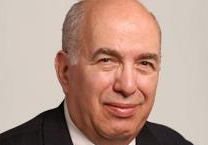Investing vs. Speculation

Editor’s note: This is another response to the question posed here on Monday: what is the difference between investing and speculation? If you are compelled, we invite you to comment below, tweet us @cfainvestored, or reach out to us via email.
Twenty years ago, I considered the question of what differentiates speculation from investment in a Journal of Portfolio Management article entitled “Exactly What Do You Mean by Speculation?” To my knowledge, no one has challenged my conclusions in the intervening decades. Nevertheless, the existence of this online discussion shows that some people remain unconvinced. (Lest readers be in doubt, my intended tone is self-deprecation rather than bravado.) As my contribution to the discussion, let me recount in brief my hitherto unchallenged argument.
I analyzed 20 definitions of the term “speculation” drawn from general dictionaries, from financial reference books, and from John Maynard Keynes’s masterwork, The General Theory of Employment, Interest, and Money (1936). And I found that the definitions varied widely, which is remarkable for a term so often used in economics and commonly presumed to have an agreed-upon meaning. Some described speculation merely as buying and selling in hopes of profiting from a price change, others stated that the transactions must entail high risk, and still others stipulated that the hope must be for a quick profit. Several definitions required that all three of these conditions be met.
Aside from the fact that the available definitions frequently contradicted one another, a major problem with them was imprecision. For example, how short must the time lapse be before expected realization of a gain qualifies as “quick”? With no cutoff points specified, it is impossible to use these definitions to classify a particular transaction as a speculation or an investment.
Further difficulties arise from the application of the term “speculative” to such instruments as corporate bonds rated BB or lower. By implication, buying such bonds inherently constitutes a speculation. If the hallmark of a speculation is seeking a gain in price, however, purchasing a diversified portfolio of BB rated bonds trading above their near-term call prices1 would not appear to qualify.
This example demonstrates a key point about differentiating between investment and speculation: The difference cannot be established on the basis of the instrument. Just as so-called speculative bonds can be used for an investment purpose, “ultra-safe” U.S. Treasury bonds can be used for speculation. In fact, long-dated Treasuries are well suited for a speculator who wants to gamble on a sharp decline in interest rates. Similarly, blue-chip stocks are commonly perceived as prudent investments for the unadventurous, yet speculators may buy them as a wager on a near-term spike in the market averages.
Having rejected the customary bases for distinguishing between investment and speculation, I realized that the distinction that actually mattered was between holding the market portfolio and holding any other mix of securities and weightings. I dubbed the latter behavior “subdiversification.”
One might subdiversify for a specialized purpose, such as matching assets to a particular set of liabilities. That strategy aims at eliminating uncertainty and cannot reasonably be regarded as speculation. If, however, an individual overweights certain securities and underweights others with an eye toward outperforming the market portfolio, that individual is speculating.
Risking one’s entire wealth on the fortunes of a single stock is speculating — so is replicating a broad equity market index but eliminating one allegedly overvalued stock. Unlike definitions that rely on such imprecise criteria as “quick” or “huge” profits, subdiversification with the objective of outperforming the market portfolio paints a bright, white line between investment and speculation.
Most readers would not consider it reckless to hold a 99% match of the market portfolio. Some will surely say that it is quite another matter to let everything ride on two or three of the most volatile stocks in the index. I do not disagree. Some strategies are more speculative than others, and the degree of speculation matters. If, however, the goal is to tell whether a market participant absolutely is or is not speculating, I submit that the standard laid out in my 1993 article is the only coherent criterion.
1. “Speculative-grade” corporate bonds are typically redeemable at par (100% of face value) at maturity but redeemable prior to maturity at a premium to par, at the issuer’s option. Bonds priced above their near-term call premiums appeal mainly to investors who hope, for the period until the bonds are called, to collect income at rates competitive with money market yields. The capital gains potential for such bonds tends to be minimal.
Please note that the content of this site should not be construed as investment advice, nor do the opinions expressed necessarily reflect the views of CFA Institute.
If you liked this post, don’t forget to subscribe to Inside Investing via Email or RSS.



I do not agree with your definition. The main reason is that there would be no investors since to be branded an investor one has to cover all markets (all markets in all countries, including the copper market in Bangladesh, rice market in Chile and stock market in Zimbabwe). I also think that even an investor do try to outperform the market with his market knowledge that is based on research.
I do agree that the that the instrument has nothing to do with speculation vs investment. A portfolio of 100% T-bills can speculating in that other markets will fall but also an investment by an extremely risk-averse investor..
The difference can not be easily defined as there is no clear cut between what is investment and what is speculation. It is much up to the intention of the trader and the purpose of the trade.